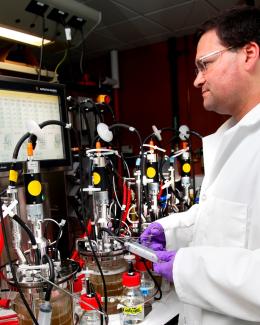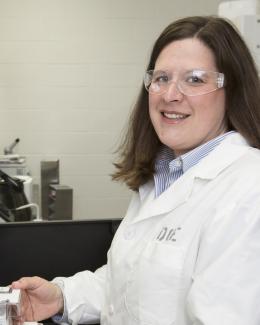Abstract
Background: Caldicellulosiruptor bescii, a promising biocatalyst being developed for use in consolidated bioprocessing of lignocellulosic materials to ethanol, grows poorly and has reduced conversion at elevated medium osmolarities. Increasing tolerance to elevated fermentation osmolarities is desired to enable performance necessary of a consolidated bioprocessing (CBP) biocatalyst.
Results: Two strains of C. bescii showing growth phenotypes in elevated osmolarity conditions were identified. The first strain, ORCB001, carried a deletion of the FapR fatty acid biosynthesis and malonyl-CoA metabolism repressor and had a severe growth defect when grown in high-osmolarity conditions—introduced as the addition of either ethanol, NaCl, glycerol, or glucose to growth media. The second strain, ORCB002, displayed a growth rate over three times higher than its genetic parent when grown in high-osmolarity medium. Unexpectedly, a genetic complement ORCB002 exhibited improved growth, failing to revert the observed phenotype, and suggesting that mutations other than the deleted transcription factor (the fruR/cra gene) are responsible for the growth phenotype observed in ORCB002. Genome resequencing identified several other genomic alterations (three deleted regions, three substitution mutations, one silent mutation, and one frameshift mutation), which may be responsible for the observed increase in osmolarity tolerance in the fruR/cra-deficient strain, including a substitution mutation in dnaK, a gene previously implicated in osmoresistance in bacteria. Differential expression analysis and transcription factor binding site inference indicates that FapR negatively regulates malonyl-CoA and fatty acid biosynthesis, as it does in many other bacteria. FruR/Cra regulates neighboring fructose metabolism genes, as well as other genes in global manner.
Conclusions: Two systems able to effect tolerance to elevated osmolarities in C. bescii are identified. The first is fatty acid biosynthesis. The other is likely the result of one or more unintended, secondary mutations present in another transcription factor deletion strain. Though the locus/loci and mechanism(s) responsible remain unknown, candidate mutations are identified, including a mutation in the dnaK chaperone coding sequence. These results illustrate both the promise of targeted regulatory manipulation for osmotolerance (in the case of fapR) and the challenges (in the case of fruR/cra).





